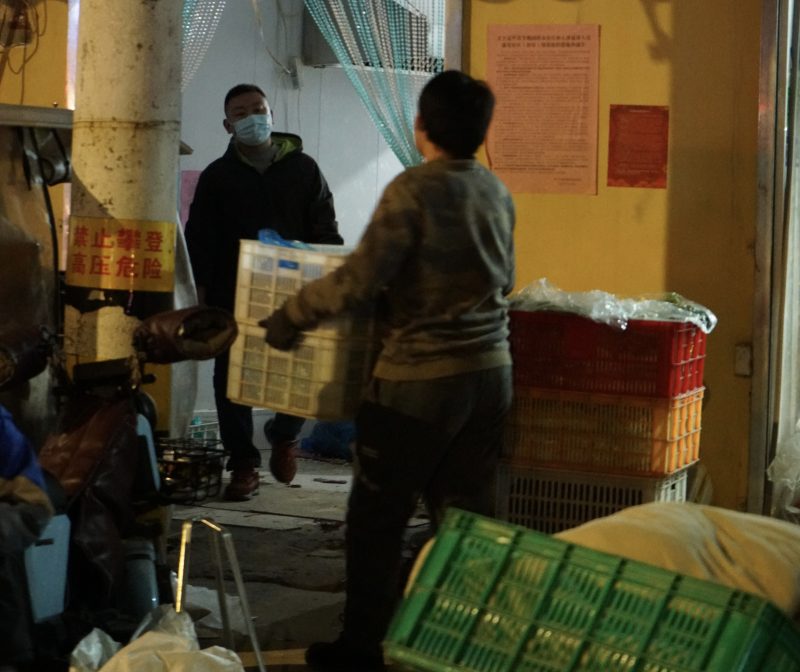October 2022 | Emma Yun








Gwen Jiang’s vision of downtown Kunshan.







Stories captured through student Leiyuan Tian’s eyes at the alternative destination of nearby Bacheng.
It’s 10:00 a.m. in downtown Kunshan and the city is bustling with life. The locals and seniors are just beginning their days while vendors line up goods for eager customers. Unlike other areas of Kunshan, this district keeps alive more traditional customs while exemplifying how waves of modernity are impacting local ways of life. The newest luxury cars parked along the streets are juxtaposed with people walking home with groceries fresh from the wet market. As gentlemen play games and chat with old friends on the side of roads, others rush along on their phones to restaurants with foreign cuisines. Here, one can see the interplay between the old and the new Kunshan and understand the story of how it came to be.
This fall, DKU’s Media Arts 103 class saw the stories behind these streets and seized the opportunity to tell them. Led by world-traveling photographer and filmmaker, Professor Kaley Clements, DKU students roamed the roads of downtown on the hunt for a story to bring to light.

Professor Clements guiding and instructing students through Kunshan’s downtown.
Without a specific topic to restrict them, students were given the creative freedom to capture any subject of their choice to portray the world from their eyes. They focused on learning how to show a story rather than just telling it, in contrast to previous lessons of storytelling through audio medias. This trip was their second venture into the world of imagery.
Arriving to downtown together, students easily entered an immersive environment completely different from that of DKU’s surrounding area, exploring the water town, wet markets, and shops tied to local life. Here, students could not only practically apply their photography skills outside of the classroom, but also had the opportunity to learn more about Kunshan’s locals, ways of life different than their own, and experience a type of culture not found in the main city.
With a background in documentary and firm belief in recognizing the differences between intellectual ideas and emotional connections, Professor Clements found it essential to impart to his students the importance of using images to draw questions out of people rather than telling them what to think. While students may be used to pictures showing plainly the subject within them, on this excursion they learned how factors such a light, depth of field, motion, and dissolving visual aesthetics can change the mood and feeling conveyed entirely.

Professor Clements assists students with their camerawork while discussing their subjects.
Students not only explored the views for their photos, but also personally talked with locals to learn how to ask for their consent and better convey the message they want in their photo stories. Seizing the opportunity to diversify one’s perspectives is yet another key aspect of media arts. The trip helped students develop while also enjoying connecting with Kunshan natives.

A vendor shows off her freshly roasted poultry as a student captures the moment to tell her story.
At the end of the trip, Professor Clements led the class to a nearby Malaysian restaurant where he projected the photos taken on-screen for advising. As students bonded over a delicious meal, they go to view their peers’ work and how they viewed the city differently from them. In an exercise both to learn from and improve while seeing the work of their peers, students learned how they could derive their story from their photos and to clarify it with guidance from the professor.
Even if their journey with him lasted for just this class, students were able to see how anything can be manipulated through perspective to mediate how reality is perceived by others. Meanwhile, the students’ energy and ambition to improve further cemented Professor Clements’s passion for the field as he got to share his experiences, advice, and methods for self-improvement.









Student Remington (Remi) Gillis shows her perspective of Omaha, Nebraska through her collection of photographs.
Like at many institutions across the world, with the outbreak of the pandemic some international students were unable to make it to Kunshan’s downtown and in-person classes. Yet students learning remotely due to COVID-19 protocols were not left out of this activity either. Instead of working in the water town, Remi Gillis was able to satisfy the objectives of this field trip Omaha, Nebraska. Capturing daily life in the city and its alterations due to the pandemic, Gillis’s work embodies how locality is expressed in different settings and offers a glimpse into Omaha’s social climate.

Students watch as Professor Clements project their peers’ work to synthesize constructive criticisms.
In an era where many spend their time scrolling their phones with their attention flicking quickly from one post to the next, it is incredibly important to recognize the power of storytelling and communicating the message you want through visuals. To walk the fine line of balancing portraying the message you want and leaving room for the audience’s interpretation, you must first understand perspective and that there is no real objectivity behind the camera. As the students on this trip learned, grasping the concepts of photography are not as simple as a click of a button or a clip in an editing software. Stories must be found in order to be captured, and going out to explore is to uncover your shutters to a new reality.







Tong Yu (Mandy) chooses to focus on more natural elements of the city.
“Underneath the Peacefulness” (student documentary by Jiaxun (Jessie) Cao inspired by the field trip).